Financial reset: strategizing for a prosperous year ahead

The beginning of a new year is an ideal time to prepare financially for the year ahead, especially after gathering information for last year’s taxes. This period offers a valuable opportunity to assess your spending, cash position, emergency savings, credit card debt, and investments. Setting the stage now sets a clear path for where you want to be financially by the year’s end.
Set clear financial goals
What are your financial targets for the year? Whether it’s reducing debt, increasing savings, or investing wisely, define these objectives clearly. The most effective goals follow the SMART framework, which means they should be specific, measurable, achievable, relevant, and time-bound.
Here’s how the SMART framework looks in practice:
Specific: reduce credit card debt.
Measurable: pay off $5,000 in credit card debt.
Achievable: pay $416 monthly toward credit card debt.
Relevant: reducing this debt will decrease financial stress and improve my credit score.
Time-bound: achieve this goal by the end of the year.
If you’re looking for inspiration, here are several financial goals worth considering:
Set aside funds for education or career development. Additional certifications, courses, or advanced degrees can enhance career prospects and potentially increase earning power.
Save for a home. Saving for a down payment on a house can be a significant goal for renters. For homeowners, you might set a goal to pay down the mortgage principal faster.
Retirement planning. Review and adjust your retirement savings goals. Consider increasing contributions or diversifying retirement investments.
Create a diversified investment portfolio. Aim to build or re-balance an investment portfolio to spread risk across different asset classes.
Automate finances. Set up automatic transfers for savings and bill payments to ensure consistency and avoid late fees.
Improve financial literacy. Commit to learning more about personal finance, investments, and tax strategies.
Plan for major purchases. Set specific savings goals for major future purchases, such as a car, vacation, or home renovation.
Healthcare planning. Consider saving for future healthcare costs, including long-term care insurance or a health savings account, if you’re eligible.
Create multiple income streams. Explore avenues for passive income, like rental properties or dividend-yielding stocks, or consider starting a side business.
Review and update insurance coverage. Ensure that your insurance coverage (life, health, property) is adequate and up-to-date to protect against financial risks.
Analyze your current financial situation
After setting financial goals, review your finances from the past year. Begin by categorizing your major expenses. This breakdown will shed light on your spending habits and help you identify where you can economize or need to increase your budget.
Strategize debt repayment
Review the interest rates on your debts and prioritize paying off those with small balances or high interest rates. For example, paying off a $200 balance offers a quick win with relatively little effort. Then, shift your focus to your high-interest debt, which is often the most financially draining.
If you have significant savings, like a $50,000 emergency fund, consider paying down the debt and maintaining the available credit. This could reduce interest expense while still providing the same amount of emergency cushion.
If you have a Home Equity Line of Credit (HELOC), the interest expense may be tax deductible if it meets IRS guidelines. Consider leveraging your HELOC to pay down other debt at similar or higher interest rates.
If immediate repayment or debt restructuring doesn’t align with your current circumstances, you may still want to review other credit card offers. Look for cards with lower interest rates, attractive balance transfer deals, or better rewards than your current cards.
Evaluate your emergency fund and investment opportunities
Evaluate the adequacy of your emergency fund. Consider whether it is sufficient for unexpected costs or if it falls short, as this is key to assessing your financial safety net. This fund must be easily accessible because an emergency may require immediate funds. Consider the advantages of placing the funds in a high-yield savings account or a low-risk investment vehicle with high liquidity.
Assess the performance of your investment portfolio. Look at the returns and judge how well they align with your risk tolerance and investment objectives. Meet regularly with your financial advisor to review and adjust your portfolio.
Early tax planning
While there are some tax strategies you can use at the end of the year, starting early can be much more effective. Consider potential tax-saving opportunities now so they can be integrated into your overall financial strategy. Your tax-saving strategies will differ based on your personal circumstances, but here are some proactive tax-saving strategies worth considering:
Maximize retirement contributions
Increase contributions to tax-deferred retirement accounts like a 401(k) or an IRA. For 2024, the 401(k) contribution limit is $23,000, and the IRA contribution limit is $7,000. If you’re over 50, you can make additional catch-up contributions.
Itemize deductions if beneficial
Consider whether itemizing deductions is more advantageous than taking the standard deduction, which is $14,600 for singles and $29,200 for married couples filing jointly in 2024. Itemizing may make sense if your combined deductions for expenses like mortgage interest, state and local taxes, medical expenses, and charitable donations surpass these standard deduction amounts.
This is where your data from last year’s taxes will be useful. If your deductions exceeded the standard deduction last year and you believe you will have enough deductible expenses this year, you can plan to maximize those deductions as much as possible throughout the year.
Health savings accounts
Contributing to an HSA is a wise choice if you’re covered by a high-deductible health plan (HDHP). For 2024, the contribution limits are $4,150 for individuals and $8,300 for families. HSA users over age 55 can contribute an additional $1,000.
When you opt into an HDHP, your eligibility for an HSA is determined based on the details you provide to the health plan. After enrolling, you’ll typically receive some forms from the plan administrator that are required to establish your HSA. While all HDHPs must appoint a trustee to administer the HSA, you have the flexibility to keep your HSA with the chosen trustee or transfer it to a different financial institution of your preference.
529 college savings plans
If you have children, consider contributing to a 529 plan for their education. While contributions are not deductible on your federal taxes, many states offer state income tax deductions or credits. The earnings in a 529 plan also grow tax-free when used for qualified education expenses.
Consider a flexible spending account
If your employer offers an FSA for healthcare or dependent care expenses, consider contributing. These accounts use pre-tax dollars for eligible expenses, reducing your taxable income.
Energy-efficient home improvements
If you make energy-efficient improvements to your home, you may be eligible for certain tax credits. These can include solar energy systems, energy-efficient windows, and more.
Monitor and adjust your plan
Financial planning is an ongoing process. Pre-schedule regular budget reviews and track your progress toward your goals. Be prepared to adjust your plan in response to life changes, economic shifts, or unexpected expenses. Your plan should be flexible enough to accommodate any needs that arise.
Organizing your finances at the start of the year, especially during tax preparation, provides a solid foundation for achieving your financial goals. Remember, early and continuous planning is the key to financial success.
If you’d like more guidance creating a financial plan that capitalizes on your assets while minimizing taxes, please contact our office for personalized advice tailored to your specific goals.



